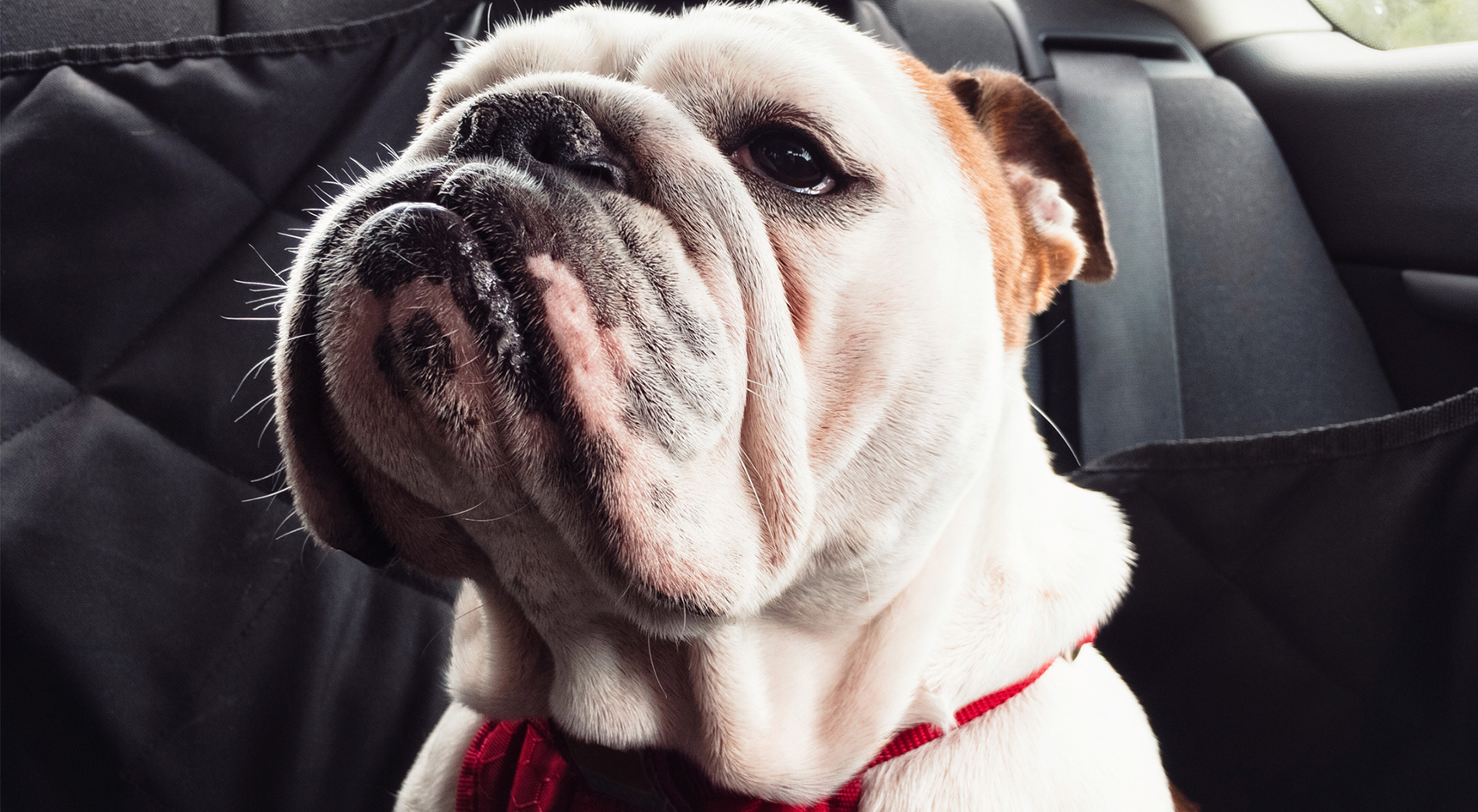Is your pet safe in the car?

Whether it’s Buddy or Bella, Polly or Pixie, your pet isn’t just an animal living in your home, pestering you for food with manipulative, doleful looks. They’re family.
Naturally you want to treat them that way when you’re transporting them from A to B and when they’re near the road.
In the car
RSPCA statistics reveal that 5000 dogs are injured or killed jumping from a moving car every year. Whether it’s a short trip to the vet or a family getaway, you need to secure your pet properly when they’re in the car.
Buy and use a pet harness that works with your car’s seatbelts. You can put your pet in the back of your station wagon or SUV, but only if there’s a cargo barrier, and keep in mind, a restraint is still recommended. For smaller dogs and cats, a pet crate or cage is suitable, but it needs to be firmly secured to the car.

Never drive with an animal on your lap. It’s dangerous and might result in a $215 fine plus a $99 Victims of Crime Levy. Even if an animal is sitting unrestrained elsewhere in the car, it can still cause an unwanted and potentially dangerous distraction to the driver.
Some dogs spin like washing machines at the mere hint of a drive, but for others, it’s their worst nightmare. Try to get them used to car travel from an early age and keep some treats and toys in the car to associate it with a fun experience. Be generous with praise and have some water handy if you’re taking a longer drive.
With the move to SUVs and taller vehicles, jumping in and out might be a trial for some pets, increasing the risk of injury – check with your vet. A folding ramp might be a wise investment, particularly for more senior canines.

Cats may need more coaxing when it comes to car travel. Buy a carrier with enough room for food, water, and space for your feline friend to move around.
Place your cat’s favourite toys, bedding and treats in the carrier and while you’re at home, keep the carrier door open to help them get used to walking in and out. When you’re driving, avoid loud music, keep the windows closed and talk to your cat in a soothing voice.
Lastly, never leave your pet in the car. Even on a mild day or in the shade, a car’s internal temperature rises rapidly and can put your pet at severe risk of dehydration, heat stroke or death. Leaving a window open won’t prevent this.

Other pets
If you need to transport your bird, place it in an appropriately sized cage or pet carrier, which you can attach to the seatbelts. Protect your vehicle’s upholstery or trim with cardboard as birds can easily bite the trim through the cage bars, leaving you with more than just a vet bill.
Remove swings, perches and other toys from the cage to prevent injury to your bird during the trip. Small birds can be put in a box with holes in the top but make sure it’s solid enough that your bird won’t chew its way out.
Rabbits aren’t fond of travelling either, so decide if the trip is necessary. If it is, try to avoid long distances and the hottest parts of the day. Keep your rabbit in a well-ventilated carrier with space for it to lie down comfortably and turn around, but small enough to make it feel secure. Don’t transport rabbits in a cardboard box (they can chew through it in no time) and if you can, familiarise them with the container first before you travel.
If you’re travelling in the car with live fish, chances are it’s to move house, so speak to your removalist first about the best way to do it. Never move a full aquarium with the fish still inside. Put them in a separate container with clean water and a lid and pack it carefully in a spot where it can’t slide around.
If you’ve purchased fish from a pet shop, place the plastic bag inside a carboard box or container on the floor of the vehicle to reduce movement while travelling. Don’t delay – you’ll want your fish back in their normal environment as soon as possible.

Near the road
Your pet bird or turtle probably isn’t near the road too often but for dogs and cats, it’s a different story. According to The Conversation, 10 million animals are hit on Australian roads each year. Many of these are native or feral animals but that figure also includes dogs and cats.
An effective way to keep dogs safe around roads is through positive reinforcement training. Always use a leash and teach your dog to view the road as a boundary and to sit when they reach a kerb. Find a quiet street to practise walking across the road while your dog stays at the kerb and reward them with a treat when they do.
Registering and microchipping your pooch will also help identify them if they do run away. Dogs can become Houdini-like when it comes to escaping from your yard, but a thorough check (and repair) of gaps, fences they can jump or dig under, or gates they might open will save you plenty of stress.

Cats are fast and agile, but unfortunately sometimes not enough. We can’t train them to sit at the kerb, so the safest option is to keep them away from roads altogether. Taking measures like having them desexed, keeping them indoors at night and in a cat run during the day, and putting a reflective collar on them will help keep your feline friend safe. And, like dogs, you should always microchip your cat – it’ll help you find them if they go missing or they’re involved in a traffic accident.

